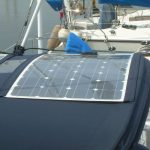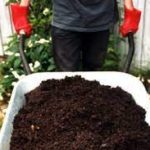Notes on the Environment
Big Blue Sailing is very proud to be environmentally proactive. We are doing our best to be environmentally neutral and through our course offerings, we hope to encourage care for the environment as a natural side benefit of our School
Sailing is naturally environmentally friendly. With regard to environmental impact, wind power trumps horsepower any day of the week.
Whales:
 Big Blue Sailing burns less fuel in a month than the average powered cruising boat burns in a day.
Big Blue Sailing burns less fuel in a month than the average powered cruising boat burns in a day.
Do we promise Whale sightings? No.
In order to promise that, you have to push big horsepower and we don’t. When we see Whales, we do so, under sail alone. Our process is to sail when in the presence of whales, turn off the Depth Sounder (it emits a high-frequency signal) and keep to the recommended distances for viewing.
We do not put our boat in front of the direction of Whales, so they can come to us. We do not “Chase” whales, looking for them to resurface near us. If we see some, we’ll stop and have a look.
In short, if we see them, we will watch and it really is a fantastic experience, but note, we observe all recommended viewing distances. We operate under sail alone and we respect the whales. Whales, in my experience, have zero negative reactions to Sailboats.
If we find ourselves amongst them, we will do our best to sail to a safe distance.
Solar Power:
 Big Blue Sailing is very pleased to have added solar power to the boat, to further reduce our impact on the environment. Solar provides most of our on-water power needs. This means that we can reduce our use of engines as much as possible.
Big Blue Sailing is very pleased to have added solar power to the boat, to further reduce our impact on the environment. Solar provides most of our on-water power needs. This means that we can reduce our use of engines as much as possible.
We have moved to solar panels and a lithium iron phosphate house battery. With this, we have both increased our electrical storage capacity and reduced our environmental impact.
Toilet Waste:

Sewage from boats harms the environment, particularly in busy or poorly flushed anchorages, and sensitive areas such as shellfish beds.
In Canada, it is illegal to dump sewage from boats within three nautical miles of shore (unless pump-outs are not available, and you cannot get three miles offshore). We are to use pump-out services where available – otherwise, we are to ensure that we are in open waters, or as far offshore as possible in the fastest flowing ebbing waters, before emptying the holding tank.
In Canadian waters, we are obliged to pack our waste in tanks and pump out said tanks at available pump-out stations. In the Gulf Island area, where we sail, there are pump-outs at Port Sidney Marina, Van Isle Marina (Sidney), Salt Spring Island Harbour Authority (Ganges), Ladysmith Community Marina, and Maple Bay Marina.
However, with exception of Ganges, most of these are not really in the actual cruising area of the Gulf Islands. As such, I believe most vessels are pumping into the ocean. (I have not yet seen a lineup at any pump out station)
We are moving to a composting head. The composting head is a much cleaner option than any other. While most people are not used to this concept, don’t worry, it is very clean and easy to use. Composting heads offer several big advantages for sailors: They have few moving parts. The solids are reduced fairly quickly, and take up less space than the mixed sewage, urine, and flush water of a holding tank.
 What’s in the composting head? The deposits are dropped into coconut coir or peat moss. Composting toilets are non-toxic and don’t smell. That’s much more than I can say for a black water-holding tank. We will still have our black water tank on board, for the purpose of urine collection. This allows us to then pump the tank out in an approved facility.
What’s in the composting head? The deposits are dropped into coconut coir or peat moss. Composting toilets are non-toxic and don’t smell. That’s much more than I can say for a black water-holding tank. We will still have our black water tank on board, for the purpose of urine collection. This allows us to then pump the tank out in an approved facility.
Composting solid waste is a natural process. It’s what happens to dead leaves on a forest floor, or to fallen trees. The waste from the toilet is removed at the end of the trip and is deposed of in a local garbage bin. (Fully compliant with regulations)
